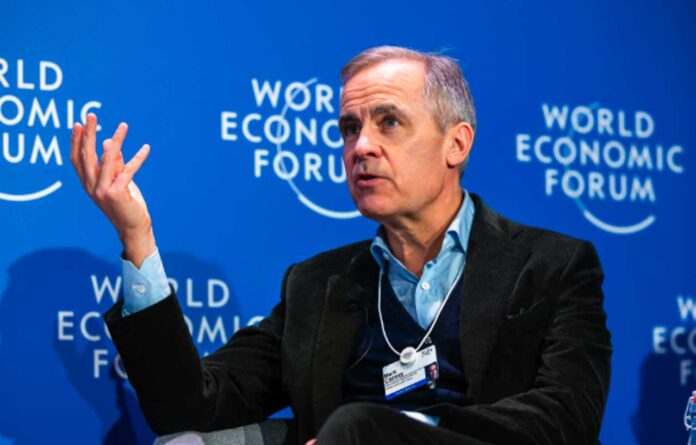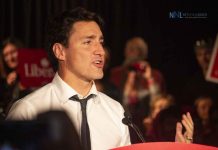NetNewsLedger Politics 2.0 | Fact Check & Policy Contrast
VICTORIA, BC – With global markets rattled by a renewed round of U.S. tariffs under President Trump, Liberal Leader Mark Carney is promising swift action to protect Canadian retirees and their savings. Framing it as a moment of economic urgency, Carney’s Liberals are positioning themselves as the steady hand ready to defend incomes, safeguard pensions, and deliver stability.
But do the Liberal promises hold up under scrutiny? And how do their proposals compare with those of Pierre Poilievre’s Conservatives and Jagmeet Singh’s New Democrats?
Here’s NetNewsLedger’s Politics 2.0 breakdown, fact check, and cross-party comparison.
 Fact Check: Are Trump’s Tariffs Causing a Retirement Crisis?
Fact Check: Are Trump’s Tariffs Causing a Retirement Crisis?
Claim: “President Trump’s tariffs are rupturing the global economy.”
Reality:
-
The return of protectionist tariffs by the U.S. has increased global market volatility, especially in manufacturing, agriculture, and energy sectors.
-
Canadian exports face rising barriers, and investor confidence has dipped.
-
However, direct impacts on RRIFs or pension savings are not yet catastrophic.
-
Seniors with market-exposed investments may be seeing reduced portfolio values, but this is not a collapse, rather a decline amidst broader volatility.
Verdict:
 What Are the Liberals Promising?
What Are the Liberals Promising?
New Measures Announced:
-
Reduce RRIF minimum withdrawals by 25% for one year
Provides seniors with flexibility to leave funds invested during market downturns.
-
Increase the Guaranteed Income Supplement (GIS) by 5% for one year
Up to $652 tax-free for low-income seniors.
Previously Announced Economic Supports Include:
-
EI reform: Waived waiting periods, relaxed separation rules, and adjusted eligibility based on local unemployment rates.
-
Business support: Deferred tax deadlines (April–June), new financing facility, and enhanced regional development funds.
-
Up to $40 billion in liquidity aimed at small and medium-sized businesses.
Message: Liberals are presenting themselves as a crisis-ready party, guided by Carney’s economic credibility as a former Bank of Canada and Bank of England governor.
 Policy Contrast: Liberals vs Conservatives vs NDP
Policy Contrast: Liberals vs Conservatives vs NDP
| Policy Area | Liberals (Carney) | Conservatives (Poilievre) | NDP (Singh) |
|---|---|---|---|
| RRIF Flexibility | Reduce mandatory withdrawals by 25% | No clear plan announced | Likely to support in principle |
| Support for Seniors | GIS boost + RRIF relief | Tax cuts, end of inflationary policies | Expand GIS + pharmacare and dentalcare for seniors |
| Approach to EI | Eased access and waiting period | No current EI reform announced | Expand EI coverage, including gig workers |
| Tariffs/Trade Crisis | Emergency business liquidity + infrastructure investment | Promote “Made-in-Canada” policies, cut red tape | Invest in public sector jobs and manufacturing resilience |
| Economic Strategy | Stabilize via monetary and fiscal policy | Slash government spending, reduce Bank of Canada scope | Public investment-led growth, taxing the ultra-rich |
| Taxes | Maintain middle-class tax cuts, targeted relief | Broad-based tax reductions, kill carbon tax | Tax wealth, close corporate loopholes |
| Pension Protection | Focus on flexibility and support during crises | Criticizes market instability, proposes simplified CPP investment | Supports expanding public pensions & defined-benefit plans |
 What It Means for Thunder Bay & Northwestern Ontario
What It Means for Thunder Bay & Northwestern Ontario
-
Seniors in Thunder Bay, Fort Frances, and Dryden—many of whom rely on RRIFs or GIS—could benefit directly from these measures if enacted.
-
RRIF reduction gives retirees more time to recover from market dips before withdrawing.
-
GIS increase offers immediate relief for low-income seniors on fixed incomes, a growing demographic in the Northwest.
-
Business supports could help Thunder Bay’s small business sector stay liquid through market uncertainty.
But the effectiveness of these plans depends on fast rollout and provincial cooperation—especially for EI, infrastructure, and retirement benefit reforms.
 Conclusion: Protection, but Not Perfection
Conclusion: Protection, but Not Perfection
Mark Carney’s Liberals are offering targeted, practical supports for seniors and small businesses amid economic uncertainty—but critics will note the temporary nature of the measures and a lack of structural reform in retirement security.
The Conservatives propose sweeping tax reform and deregulation but offer fewer specifics on retirement or income supports. The NDP, meanwhile, promote a more transformational, public-first approach, focusing on universal services and pension expansion.
As the global economy shifts again, Canadian voters will need to weigh:










